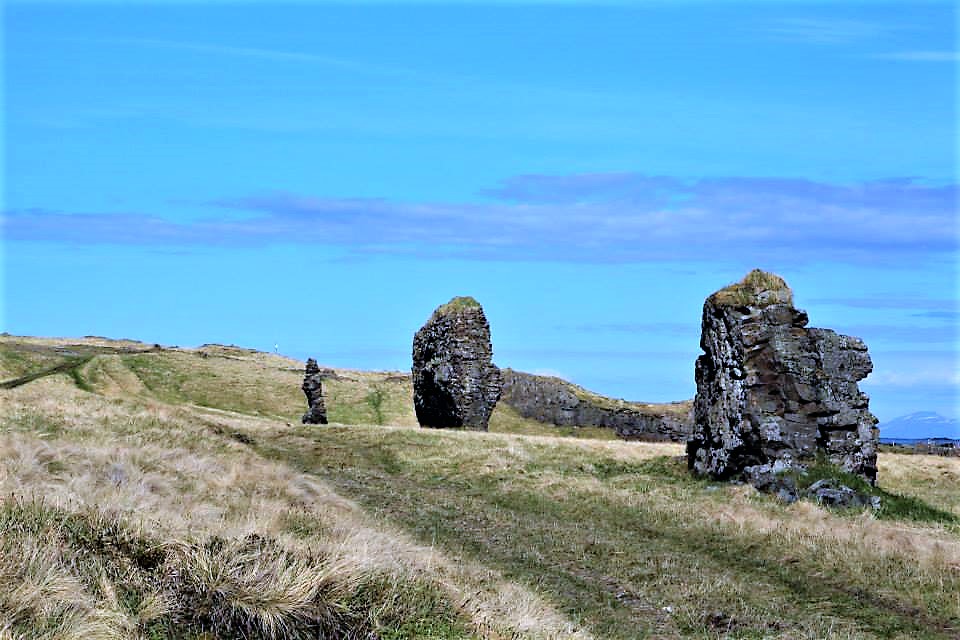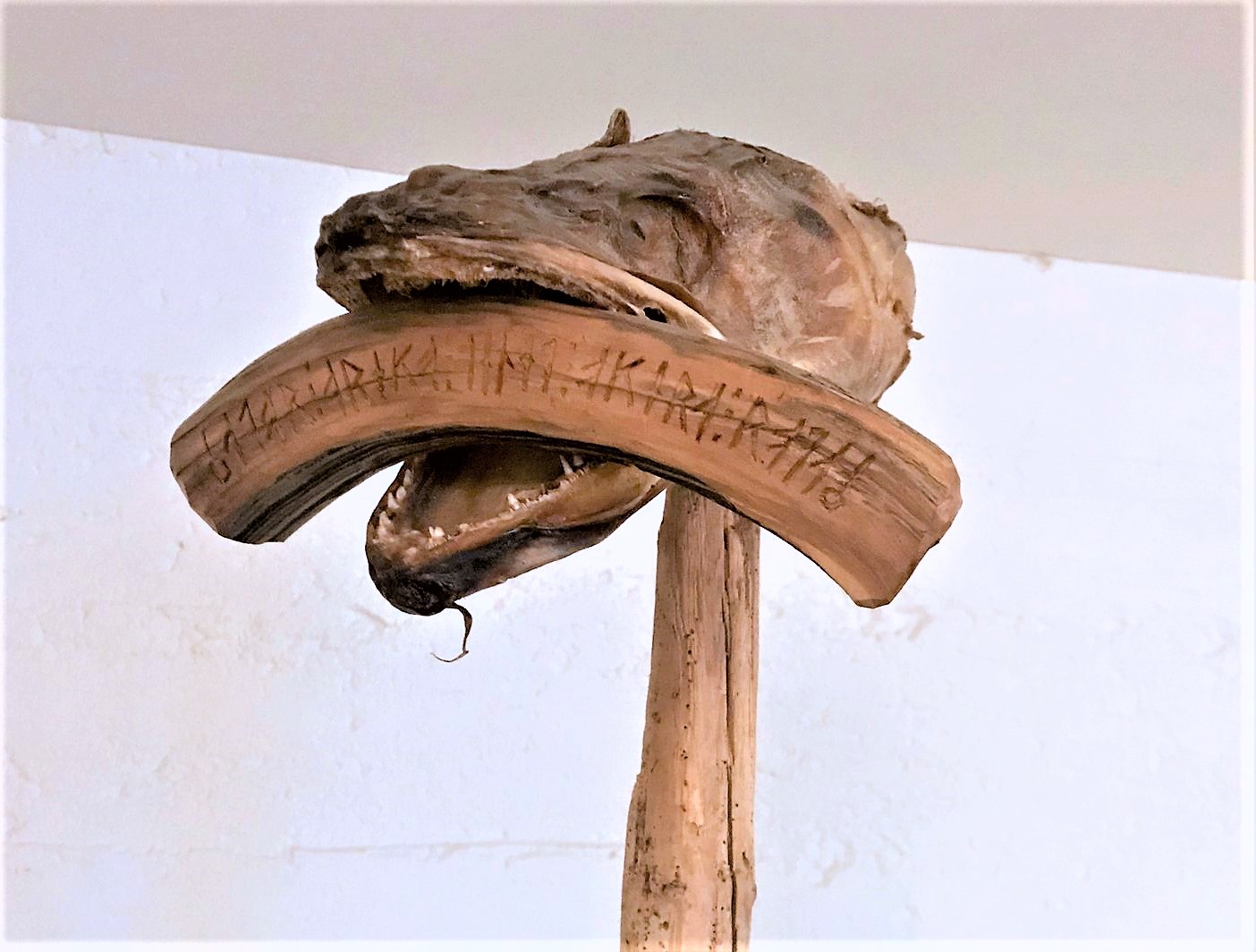It had been less than a year since the three men Þórður, Egill and Grímur burned to death when the epileptic epidemic flared up again. But, this time the symptoms were worse than before. Women screamed as if their life depended on it and fell to the ground frothing at the mouth like rabid dogs. Under those circumstances, Margrét made a daring escape from devoted witch-hunters.
Runs in the family
The epidemic seemed to be more like a curse rather than an illness. Therefore, people were terrified of how far the sorcerer would take the curse. Thus, without a hint of concern or remorse for possible wrongful execution of Þórður, the people suspected there were more sorcerers at play. Incidentally, just like the two men that Þórður tutored, his daughter Margrét was next on their list.
Understandably, Margrét feared for her life and began planning an escape. For the purpose of preserving her father’s legacy she grabbed as many of his books as she possibly could. Because of this, some of his books were saved from being burned with him at the stake. Among the books was Konungs skuggsjá which he had copied with his own hand writing. Because of her bravery, the book is now well preserved in the Arnamagnæan Manuscript Collection (Árnasafn) and is marked 243 e. Furthermore, the public can read the book for free online here.
The witch-hunt begins
Margrét’s packed the books and escaped across the heath called Ófeigsfjarðarheiði where she then headed towards the fjord called Ísafjarðardjúp.
However, it didn’t take long for the witch-fearing lawmen to realize she was gone. However, they weren’t going to let her get away that easy so, a hunt for the witch was on. They described her as being average height, fair-skinned and with high cheek bones. She was intelligent and a very good lyricist. Not only that but also her magic was dangerous as well. Above all, the witch-hunters should arrest her and bring her before the court in Strandasýsla (Strand County).
The hiding place
Exhausted from the long hike across the heath, Margrét wanted nothing more than to rest her worn out body. It was late and already dark when she saw the farmstead Staður in Snæfjallaströnd. Desperately looking for shelter, she noticed a structure nearby which turned out to be a shepherd’s hut. Relieved and exhausted, she made herself a little rest area inside the shed. She didn’t know how long she could escape from the devoted witch-hunters.
When the shepherd arrived the next morning, he noticed a suspicious indent in the hay. The shepherd for Snæfjöll vicarage walked towards the hay bales and saw the young woman resting. He felt bad for her so much that he offered to bring her back to the farm house for shelter. Although very grateful, Margrét refused, but wanted very much to stay in the shepherd’s hut if he could keep it a secret.
The love affair
The shepherd brought Margrét food and tried to make her as comfortable as possible. She had been living in the shed for four days, when the farmstead owner, Rev Tómas Þórðarson found her in the hay. Just like the young shepherd, the priest felt bad for Margrét and offered to bring her back to the farm house. But even so, Margrét refused but this time she asked if she could hide by the altar inside the church.
Not only did the priest want to keep her safe but also captivated by her beauty as well. In fact, the long-time married priest fell in love with Margrét shortly after. Furthermore, he was now even more invested in helping Margrét escape from the devoted witch-hunters.
Two sides of the story
From hereon the story splits, depending on the source. Some say the priest’s wife was sick and the young Margrét sang with a beautiful voice at her bedside. Consequently, the singing put a spell on the sick wife who died shortly after.
Another side of the story claims that while Margrét hid inside the church, she asked to meet the wife. The reverend agreed and told his wife, Margrét Gísladóttir, to go to the church. Therefore, the wife headed over to the church not sure what to expect. She opened the doors and as she walked towards the altar she suddenly collapsed to her knees and died.
Regardless, the fact of the matter was that as the talented sorcerer she was, Margrét killed the wife. The priest carried the grief for his wife’s death very well and before long the young Margrét replaced her role on the farmstead.
Vilified
The lovebirds failed to keep their relationship a secret. Under those circumstances, people started talking about the shameful conditions of the vicarage. Furthermore, stories of Margrét as a troll began circulating. She was now a troll that played the harp and sang beautifully out in the woods with the intention of leading the king’s men astray. Because of this, they failed in their search of a wife for their love sick king.
The letter

A year after Margrét’s escape from the devoted witch-hunters, reality had finally caught up to her. The young woman’s witchcraft was no longer just a rumor. With this in mind, the court officially charged her (April 25th, 1656) with sorcery and causing harm, especially to women.
Margrét was quite happy with Rev. Tómas and had no plans on going anywhere. Fortunately, it appeared that the priest who condemned her father had a change of heart. Rev. Þorvarður had had enough of watching people burn and wanted to make sure he did all he could to prevent another tragic persecution. With this in mind, he wrote a plea letter on Margrét’s behalf, begging for mercy.
Trial by compurgation
In the meantime, the witch-hunters struggled to find Margrét and so, as time went by the search party grew thinner. Because of this, the witch-hunters gave up all hope of finding her and went back home. Then, in 1659 her case was brought back in court where it was reviewed and reopened. It was time for another attempt at bringing the witch to justice. But, this time the Althing at Kirkjuból in Steingrímsfjörður granted her a tylftareiður (oath of compurgation). Because of this, Margrét had the opportunity to be exonerated of all charges and live her life in peace. Furthermore, that same year Margrét gave birth to their first child and the following spring they moved to Sandeyri.
The verdict
Despite her constant escape from the devoted witch-hunters, in 1660 Margrét and Tómas were raising a child together. As a consequence for his actions, Tómas lost his priesthood privileges and was forced to give up his priesthood. Moreover, since many in the community were against their relationship, it probably didn’t help her case in completing her oath. In fact, she was never able to and in the end and so, the lawmaker Magnús Björnsson demanded that:
Back to witch court
helpers had sworn against her while five supported it. The authorities didn’t know what to do. This was a life and death matter and many of the town’s people weren’t so sure of her guilt.
Under those circumstances, the lawmen looked up in the Landslagabók (Book of the Law of the Land) for help:
With this in mind, Margrét was in the custody of the sheriffs until she gave her oath (eiðstafur) on August 18th, 1662 at Kirkjuból’s Thing.
The final verdict
Because of what was in the lawbook, Margrét picked four people to testify on her behalf. As a result, The four oath-helpers testified to her good character. Because of this, there was enough people who believed she wasn’t a witch. Therefore, as seen in the Althing notebook she was found innocent of all charges:
Margrét had finally ended her escape from devoted witch-hunters. However, rumors of witchcraft followed her for the rest of her life and continues even today. Indeed, she won her case at Kirkjuból’s Thing. On the otherhand, she lost her case in the folktales and thus is forever known as Galdra-Manga (Witchcraft Margrét or the Conjurer).
Epidemic

This epileptic epidemic seemed to linger throughout the years and in 1668 it flared back up again. Sigmundur Valgarðsson from Norðurfjörður became very ill and without hesitation went to the Althing and claimed that Farmer Eyjólfur Jónsson had with his artistry and impossibility caused his illness. He knew it was hard to escape from devoted witch-hunters and wanted to save people from the infamy if he could.
ith a new politician, priest and sheriff in town such serious allegations needed a closer look before making any drastic decisions. For this reason, the case was brought up at the Althing in Árnes and is a post for another time.
After the trial
Tómas and Margrét lived in Sandeyri and Unaðsdalur in Snæfjallahreppur. They had three sons together: Þórður in Lónseyri (b. 1659), Þórður the younger (b.1660) and Pétur in Látrar (desolated) in Aðalvík and Munaðarnes (b.1664).
Tómas died after 1681 and after his death, Margrét moved in with their son Þórður and his wife Hólmfríður Árnadóttir on Lónseyri. Margrét died in 1726.
The death of Galdra-Manga (Margrét)
Although, reality can be adventurous enough in itself, folklores like giving it a nudge towards tragedy or the supernatural. Therefore, through stories people are immortalized by giving them either eternal life or tragic deaths. Consequently, Margrét’s story is no different. In fact, she gets more than one death in her stories. Incidentally, both stories end with her drowning in a waterfall which leads to naming the waterfall Möngufoss (Manga‘s fall).
There are two stories about how this waterfall received its name.
Möngufoss
1 The rich farmer
er work on the farm but nontheless, she wanted the farmers money. Therefore, whenever the farmer left the house, she searched every possible crevasse for the oak chest.
Undeterred by her failed attempts, she continued searching until finally one day she found it. Without wasting any time, she pulled the chest out of its hiding place and took off running towards Strönd, all the while carrying her newfound treasure.
The chase
The farmer came home after a laborious day only to find both Manga and his valuables gone. Under those circumstances, he became enraged and rushed out the door. Finally, he caught up to her by Innri-Skarðsá river. However, when the farmer demanded his valuables back Manga threw herself into the waterfall along with the oak chest.
2. The sorcerer hunters
In the second version, the sorcerer hunters never gave up looking for her. In short, one day they were able to capture her and drag her towards the waterfall where they drowned her.
So, not even in the folklores did Margrét manage to escape from the devoted witch-hunters.

















One thought on “How a Woman Made A Daring Escape From Devoted Witch-hunters”
Comments are closed.